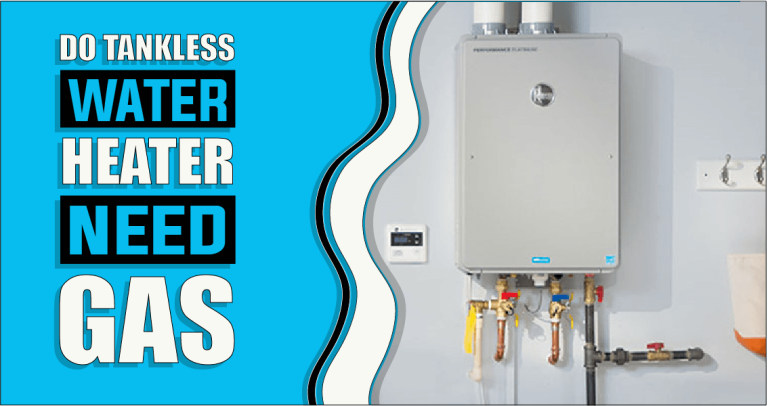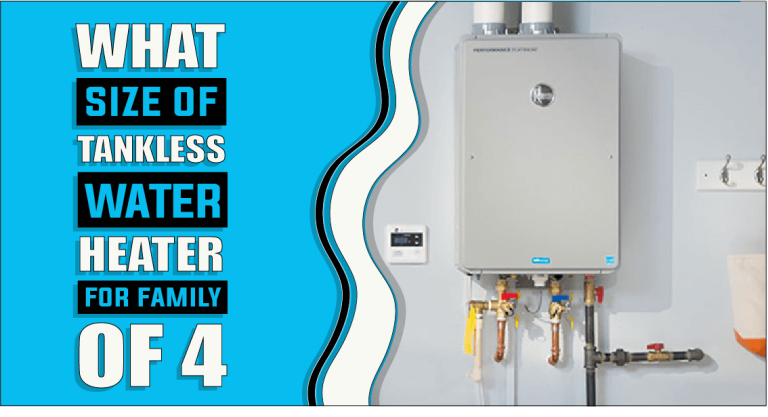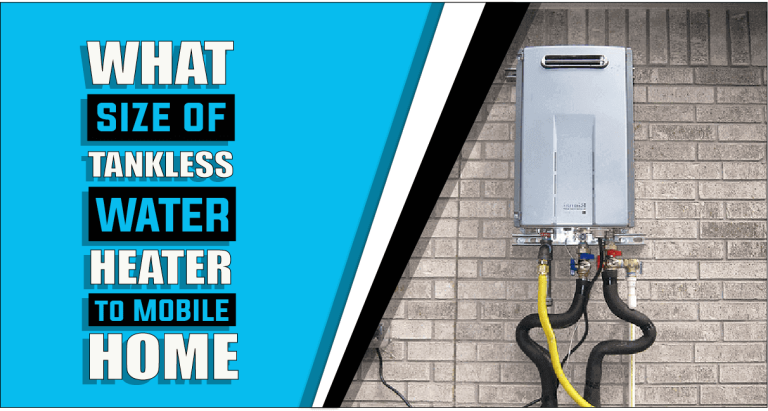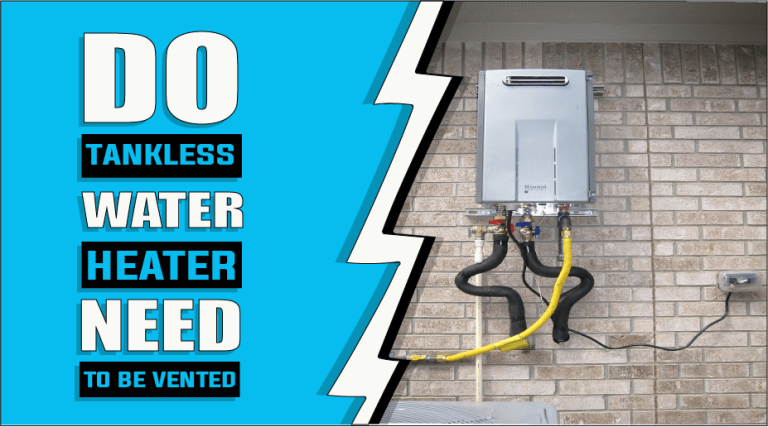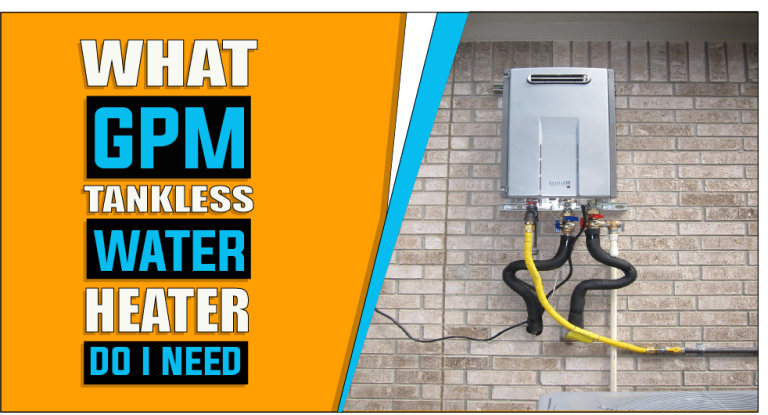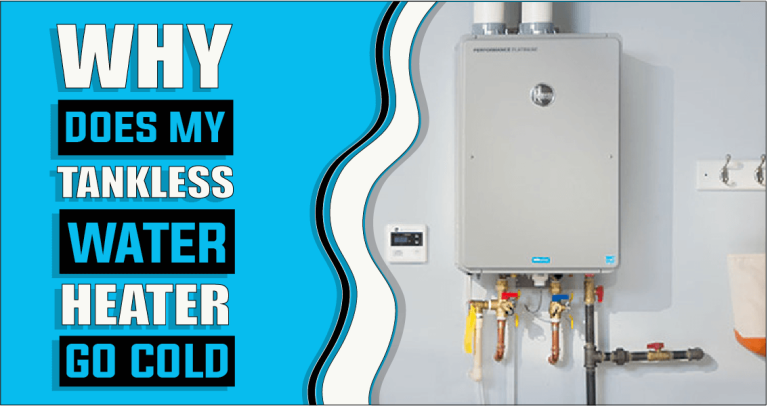Do You Need A Recirculating Pump With A Tankless Water Heater – The Truth Reveals
Are you considering installing a tankless water heater in your home, but not sure if you need a recirculating pump? Tankless water heaters are becoming increasingly popular for their lower operational costs and convenience compared to traditional models. However, it is important to understand the role that a recirculating pump plays when using these systems.
In this post, we’ll explain why you may or may not need one as well as how they can help save energy and money while providing hot water on demand. Read on to learn more about whether your tankless system will benefit from having a recirculating pump or not!
Exploring do you need a recirculating pump with a tankless water heater
A recirculating pump can be beneficial when used with a tankless water heater. This combination offers multiple advantages, such as improved energy efficiency and faster hot water delivery. A recirculating pump can keep hot water moving in the pipes, preventing it from cooling off while sitting idle. This will reduce the amount of time you waste waiting for hot water to arrive as well as reduce the amount of energy needed to heat your home’s water supply.
Additionally, a tankless water heater using a recirculating pump requires less maintenance than its traditional counterparts because there are no storage tanks with which to worry about corrosion or leaks. Finally, installing both devices at once eliminates the need for extra plumbing and ensures efficient operation with fewer opportunities for costly repair issues down the road.
What is a Recirculating Pump?
A recirculating pump is a device that is used to create an efficient circulation of water within a plumbing system, often to provide hot water on demand. The pump moves cold water from the main water line back to the water heater faster than gravity would normally allow, which significantly reduces the wait time for hot water. This type of pump works by creating a loop in the plumbing system, a loop that circulates hot and cold water.
What Does a Recirculation System Include?
Recirculation systems are an efficient way to make sure hot water is always ready! They include a combination of methods, from a powerful pump and water heater to leverage kinetic energy, as well as controls that turn on when needed for optimum time-saving comfort.
1: Water Heater And Pump
A recirculation system typically includes a water heater and a pump. The water heater is essential in providing hot water to the home whenever it is needed. The pump is used to circulate the warm water from the water heater throughout the plumbing system. The pump will work continuously to ensure that the hot water can be accessed quickly when needed.
2: Recirculation Method
A tankless water heater with a recirculating pump may use an indirect or direct recirculation method. The indirect method uses two pumps connected to the hot and cold water lines, while the direct method utilizes a single pump on the hot water line.
3: A Way to Control When the Circulation Pump Runs
An automated control system is necessary for controlling when the circulation pump runs. This helps to reduce energy consumption by only running the pump when it’s necessary or on a pre-set schedule, depending on what works best for particular needs or preferences.
In some cases, such as with tankless systems, motion sensors may also be utilized to detect movement near fixtures that use hot water and trigger the circulation of warmer temperatures throughout the lines more quickly.
How Does Recirculating Pump Work with a Tankless Water Heater?
Tankless water heaters are instant, on-demand models that don’t have any storage tanks, so they must heat the cold incoming water whenever you turn on the tap or shower. However, this process takes several seconds and may result in colder than desired temperatures before the hot water arrives at its destination.
When used with a tankless water heater, a recirculating pump can increase its efficiency by eliminating the wait time for hot water. The pump works by drawing cold water from the main line into the tankless heater and then sending it back out through the same pipe, with the addition of heated water mixed in. This process allows hot water to be available almost instantly when needed, rather than waiting for it to travel through pipes throughout your home before reaching its destination.
Average Cost of Investing in a Recirculating Pump With a Tankless Water Heater
It’s crucial to know the price so you can choose a “value for money” recirculation system. Before we dive in, let’s make one thing clear, recirculating systems can be cost-effective solutions for anyone who wants to save a few extra bucks.
1: Tankless Water Heater With Recirculation Pumps
Recirculating pumps are used to circulate hot water through small pipes that travel from a storage device back to its water source. The result is near-instant hot water without having to wait for it to heat up in a traditional storage tank. This means no more cold showers or wasted energy due to keeping an unused hot water tank running all day!
When combined with a tankless water heater, these pumps can provide efficient hot water service with minimal energy use and operating expenses.
The cost of investing in a recirculating pump with a tankless water heater can vary significantly depending on the type of system you choose. Generally, installing a separate recirculation pump and line alongside a tankless water heater can cost between $600, not including installation costs.
2: Separate Recirculation Pumps
If the tankless water heater you have installed lacks a built-in recirculation pump, you can still use a separate recirculation pump to solve your problem. Depending on the size needed, a separate recirculation pump would cost between $200 and $500.
3: Complete Kits
Additionally, you can purchase a complete kit that includes both the pump and the recirculation line for anywhere between $200 and $400. Prices may vary depending on the size of the unit necessary for your home’s plumbing system.
4: Recirculation Line
The cost would be about between $100 and $250 depending on the length of the line if you were installing the line with other plumbing installations. However, if you decide to install the line later, the cost can reach $1,000.
To sum it up, investing in a tankless water heater with a recirculating pump can be expensive but worth it for long-term energy and cost savings. By taking into account all of the factors outlined in this blog post, you can find an affordable solution that works best for your particular home’s needs.
Pros and Cons of Installing a Recirculating Pump with a Tankless Water Heater
If you’re looking to upgrade your tankless water heater efficiency, installing a recirculating pump could make all the difference. With this addition comes great advantages like near-instant hot showers and reduced energy use, but also potential pitfalls that must be considered carefully. Weigh up the pros & cons before making any decisions for maximum satisfaction!
Pros
- Instant Hot Water Anywhere in the House
The main benefit of installing a recirculating pump with a tankless water heater is that it provides instant hot water anywhere in the house. Not having to wait for the hot water to travel through the pipes to the tap can save both time and energy.
- Reduced Energy Costs due to Less Need for Reheating Water for Multiple Uses
By using a recirculating pump, you can save up to 10 to 15 percent of energy costs compared to non-recirculated systems as well as get hot water faster when using tankless models. Since hot water is available quickly, so you don’t need to reheat the same amount of water multiple times; this reduces energy costs over time.
- Enjoy Improved Comfort With this Combination
With a recirculating pump, you can enjoy improved comfort when using your hot water; you don’t have to wait for the tap to be filled anymore as soon as you turn it on.
- Lower Emissions from Not Needing to Heat as Much Water as Before
Moreover, installing a recirculating pump helps minimize emissions from heating large amounts of water which would normally be necessary if you didn’t have one installed. This makes them an excellent choice if you’re looking for more environmentally-friendly solutions at home.
- Prevents Lukewarm or Scalding Temperatures
Additionally, this type of circulation prevents lukewarm or even scalding temperatures in certain areas of your home where the heat dissipates over longer distances from your hot-water source.
- Help Reduce Strain on your Plumbing System
Finally, using a recirculating pump can help reduce strain on your plumbing system and potentially save you money on repairs down the road as it actively prevents stagnation and buildup within those pipes and fixtures.
So, if you’re looking for a way to get instant hot water without wasting energy or money, then a tankless heater with a recirculating pump could be the solution for you, as it can provide increased convenience and efficiency while helping reduce overall costs over time.
Cons
- Installation Can be Costly
Installing a recirculating pump with a tankless water heater can be expensive, depending on the size of the pump needed for the particular home. Costs may include hiring a plumber to properly install it and purchasing necessary materials, such as valves, pipes, wiring, and adapters. Having an expert perform the installation is important for safety reasons and to ensure it functions as intended.
- Recirculation Pumps Require Regular Maintenance
Recirculation pumps also require regular maintenance to work effectively and efficiently. This involves checking electrical connections and pipe fittings, monitoring pump performance, eliminating air locks, inspecting pipes for corrosion or leaks, and regularly replacing worn-out parts.
- Require Electricity to Operate, which Adds to Energy Costs
The pumps also require electricity to operate, which adds to your overall energy costs significantly. This means that not only are you paying for the initial installation but also ongoing energy costs over time which can accumulate quickly if not taken into account when budgeting for the system’s use.
- If Not Properly Insulated, it May Result in Wasting Energy
Furthermore, if not properly insulated, hot water in the pipes can cool off between uses resulting in wasted energy from reheating it again before use – another cost that should be considered when weighing up the advantages and disadvantages of this setup. Additionally, if an appropriate timer is not installed or set correctly then further energy waste could occur if the pump is left running unnecessarily during inactive periods.
How Do You Choose the Right Recirculating Pump?
Choosing the right recirculating pump for a tankless water heater can be a complicated decision, as there are many factors to consider.
1: Size of Your Tankless Water Heater
The most important thing to consider is the size of your tankless water heater. This will dictate what kind of recirculating pump you need, how much power it needs to deliver, and how efficient it must be.
Additionally, the flow rate of the pump should match the flow rate of your tankless water heater. If it’s too slow or too fast, it won’t be able to provide adequate hot water supply and could result in underutilization of energy or even complete failure of the system.
2: Calculate How Long You will be Running Your Recirculating Pump
In addition to these important considerations, you should also think about how often and for how long you will be running your recirculating pump. Some high-performance pumps can run for many hours at a time without any problems.
However, if you have an older model or one that has been used frequently, it may require more frequent maintenance or replacement. You’ll also need to make sure that you purchase a high-quality model that is designed with longevity in mind so that it can stand up to everyday wear and tear over time.
3: Look For the Model With Advanced Features
Finally, energy efficiency should also be taken into account when selecting a recirculating pump for your tankless water heater. Look for models that feature an adjustable speed setting so you can save on energy bills and reduce waste by running the unit at its lowest speed during off-peak times when hot water isn’t needed as often.
Additionally, opt for models with built-in temperature controls so that the operation is optimized according to temperature requirements and the thermal load of your appliance remains consistent throughout use.
Ultimately, choosing the right recirculating pump for your tankless water heater requires careful consideration and research before making a purchase. By taking into account all these points mentioned above, you’ll ensure that you get a model that is best suited for your specific needs and lasts longer while delivering optimal performance each time.
Frequently Asked Questions
Recirculation works by keeping hot water circulating in the tankless water heater’s pipes so that when it is needed, the hot water is quickly available. The recirculating pump pushes cold water out of the tank and into the pipes while simultaneously pushing hot water back into the tank ready to be used again.
The recirculating pump should be installed in the hot water return line, between the tankless water heater and the fixtures. It is usually mounted on a wall or a piece of special piping near the tankless water heater.
Yes, a recirculation pump is worthwhile if you want to save energy and ensure that hot water runs quickly throughout your home. It can help reduce wait times for hot water and lower the amount of energy used by tankless water heaters. Additionally, it can also help save money over time as it reduces energy waste from running the tank
Yes, you can add a recirculating pump to tankless water heaters. It is important to make sure that the recirculating pump size and speed match the tankless water heater for it to work efficiently.
Yes, tankless systems can employ recirculating pumps. It is important to make sure that the recirculating pump size and speed match the tankless water heater for it to work efficiently. Additionally, some tankless systems have built-in recirculation pumps or pre-installed kits.
Conclusion
Do you need a recirculating pump with a tankless water heater? The answer to this question depends on your individual needs and whether you want to take advantage of the energy savings associated with recirculation. If you are looking for a tankless water heater that will provide plenty of hot water quickly, then adding a recirculating pump is worth considering. Make sure to do your research and select a model that is suitable for your tankless water heater’s size, speed, and temperature requirements. By taking all these factors into account, you can ensure that it operates efficiently and delivers optimal performance each time. With the right recirculating pump installed, tankless water heaters can be an excellent choice for anyone seeking long-term energy efficiency in their home or business.
Ella John is passionate about helping her readers make the best choice when purchasing a heater. She understands that selecting a heater can be difficult and strives to provide information to help make the decision easier. Ella’s website, Heatersinfo.com, provides valuable insight into heating trends and types of heaters and tips on how to care for them. She also advises selecting the right heater based on individual needs and preferences. Her expertise in electronics makes her an excellent source of knowledge, and she is confident that anyone who visits her website will find the perfect heater information for their needs. Ella’s dedication to helping others make educated decisions about buying the right heater is unparalleled, and she hopes to continue offering her expertise for many years. With Ella’s help, finding the perfect heater can be a breeze!

